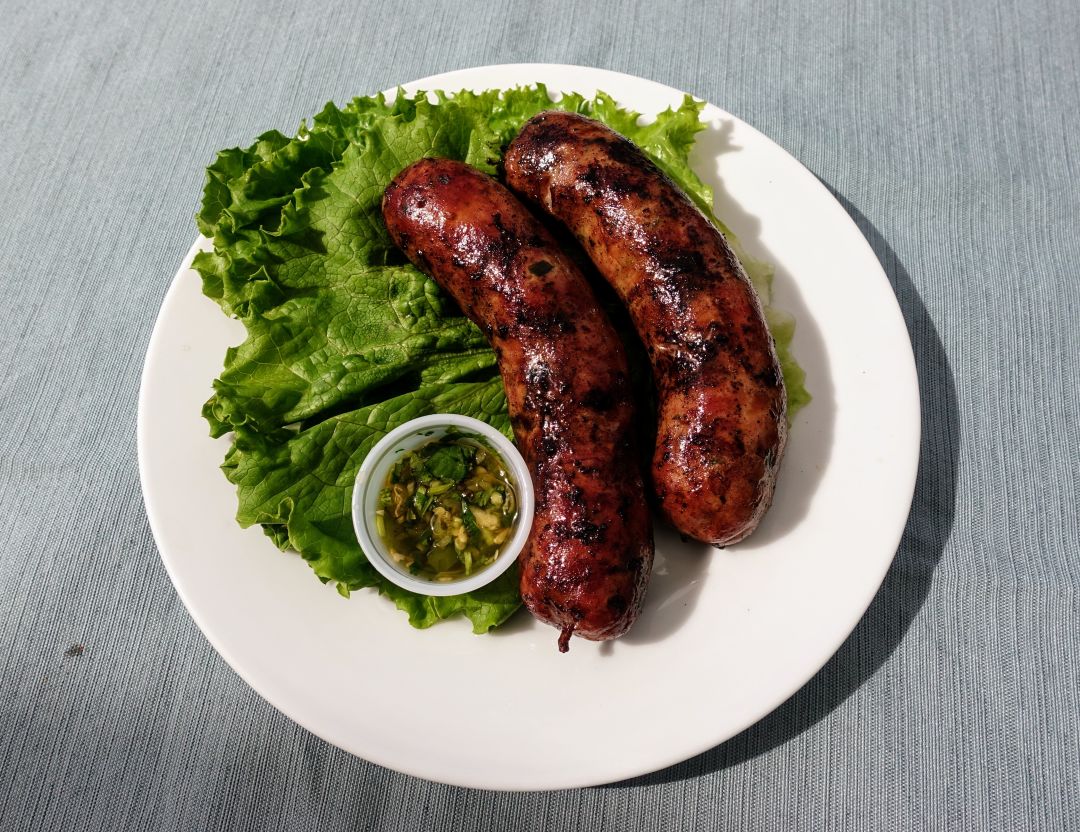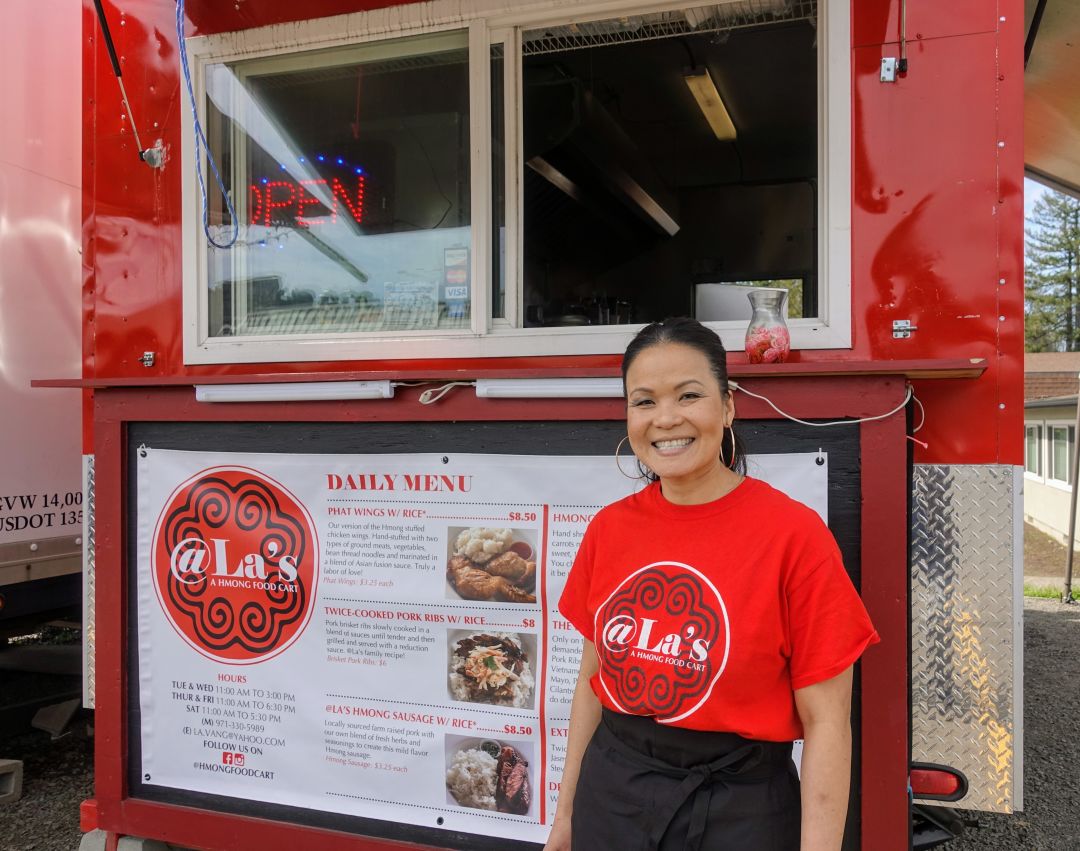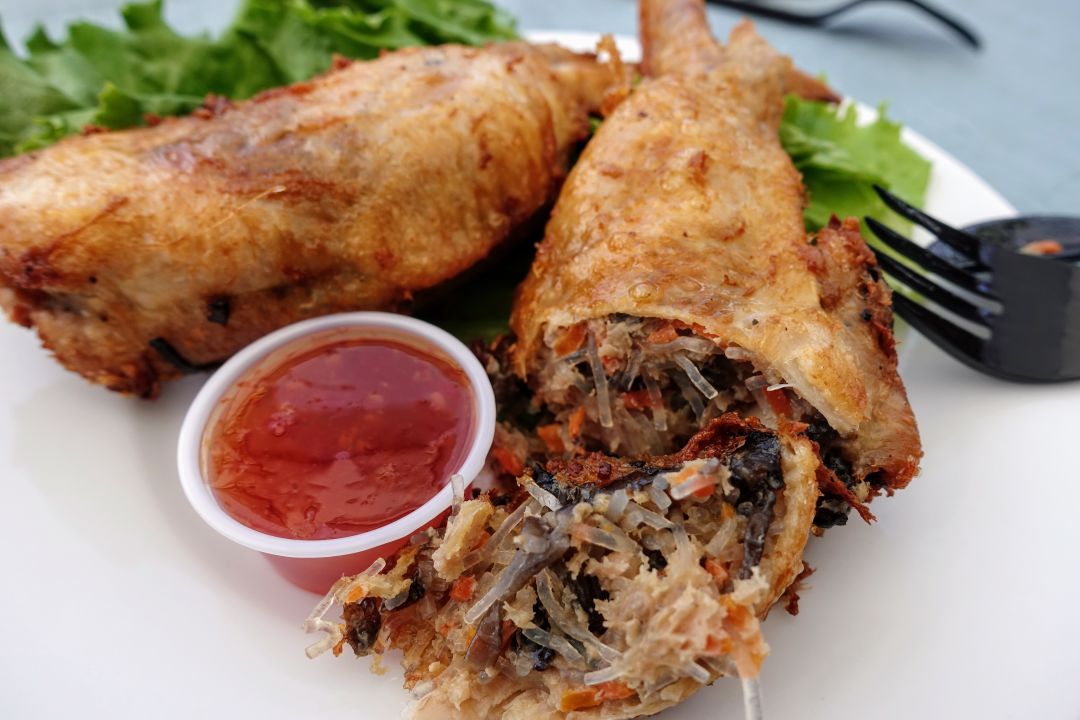Meet the Woman Launching a Hmong Food Movement in the Pacific Northwest

La Vang-Herr's traditional Hmong pork sausages, heady with ginger and lemongrass.
Image: Sean Lesch
“Hello” is a word that doesn’t have a direct translation in Hmong, the language spoken by certain groups of Chinese refugees who resettled in Northern Laos, Thailand, and Vietnam starting in the 1800s. Instead, a more common greeting among Hmong speakers is the saying “noj qaab nyob zoo,” which means “eat well, live well.”
When nonprofit development director La Vang-Herr relocated to the Portland area from Wisconsin three years ago, she found it difficult to carry out that phrase. She scoured Asian markets to find specialty mustard greens and lemongrass-heavy pork sausages—foods she grew up eating in her tight-knit community in Milwaukee, a city whose Hmong residents total about 12,000—without success. And despite our metro area’s Hmong population of around 2,500, and an increasingly diverse restaurant roster, there wasn’t a single Hmong food spot in Portland—or anywhere she could find in Oregon or Washington, for that matter.
That changed last September when Vang-Herr opened what may be the first Hmong food truck in the Pacific Northwest, in the parking lot behind a Little Caesars in Aloha. Dubbed @La’s, it’s a place to score handmade Hmong sausages, redolent with ginger, Hmong peppers, and kaffir lime, among other Hmong specialties. Vang-Herr thinks she’s the only artisan Hmong sausage maker bringing her goods to the mainstream market in the region—and maybe the only female one in America. The preparation of Hmong sausages has “always been a man thing,” says Vang-Herr, who was born in a refugee camp in Thailand and immigrated to the US with her family when she was three. So each bite of the juicy, porky delights doubles as her way to show Hmong girls and women that they too can buck traditional Hmong culture.
But it’s not just sausages: The 42-year-old says this is only the beginning of her “Hmong food movement.” It was actually a tartare that spurred her to action. Back in 2016, Vang-Herr was at a popular downtown restaurant (which she says she won’t name) with her husband and another Hmong couple. They were all thrilled to see “Hmong beef tartare” as one of the nightly specials. After the first bite, it was clear the meat tipped toward the Vietnamese pho spice cabinet; there was no trace of the distinct toasted sticky rice seasoning associated with traditional Hmong beef larb. Vang-Herr remembers saying to herself: “If anyone is going to screw up making Hmong beef tartare, it’s going to be me.”

La Vang-Herr, outside her food cart in Aloha, aims to make Hmong food as recognizable in the Northwest as Vietnamese or Chinese fare.
Image: Sean Lesch
She opened her food cart less than a year later, crafting a short roster of Hmong classics, which typically lean on aromatics like ginger, lemongrass, and cilantro in soups and stir-fries loaded with vegetables and chicken. “I was determined to make Hmong food just as awesome and as sexy as Thai food, or Vietnamese pho, or the banh mi sandwiches that you see all over the place,” Vang-Herr explains. She courted the approval of local Hmong residents, who she knew would judge her food “based on how their mothers made it.” Her creative interpretations of Hmong staples passed muster, including her twice-cooked pork ribs.
Vang-Herr, who calls herself a “chicken mama,” personally raises the Thai and Burmese chickens used in her Hmong chicken and rice dish on her farm in Hillsboro (although her three pet cluckers, Matilda, Titan, and Covfefe, are strictly off-limits for consumption). Her husband, Steve, a field service engineer at Intel, debones chickens every day after work. For another dish, her crispy “phat wings,” Vang-Herr hand-stuffs store-bought chicken wings with ground turkey and pork, bean thread noodles, Chinese mushrooms, and shredded carrots to create an irresistible, truly “fat” wing. They explode with an assortment of clashing-yet-complementary flavors and textures. Vang-Herr says even Hmong diners from Seattle are making the drive down to try her food, especially her sausages—often served with super-soft sticky rice she makes using a technique her mom taught her.

@La’s turkey-, pork- and mushroom-packed phat wings.
Image: Sean Lesch
The food cart, she says, is just the beginning: Eventually, Vang-Herr wants to open a “hip and artsy” commercial kitchen, market, and cultural hub where she can teach cooking classes, display Hmong artifacts like traditional embroidery, and bring in national speakers to talk about Hmong culture. The group has a long history of fleeing persecution (or “not bowing down to outside rule,” as Vang-Herr puts it), first from the Chinese Han in the 1800s and then from Communist ruling forces in the late 1970s. Today, Hmong are scattered around the world, but predominantly reside in Southeast Asia and Western countries.
The commercial kitchen Vang-Herr hopes to open someday would also function as a deli storefront with whole roasted pigs and grilled fish on display, and a market offering Hmong go-tos from her farm like mustard greens, Hmong cucumbers, and purple beans. Vang-Herr hopes such a place could help the Hmong population plant deeper roots in the Pacific Northwest.
“People don’t know anything about us,” she says. “But that’s the thing, we gotta tell our story, and that’s what I’m doing.”




